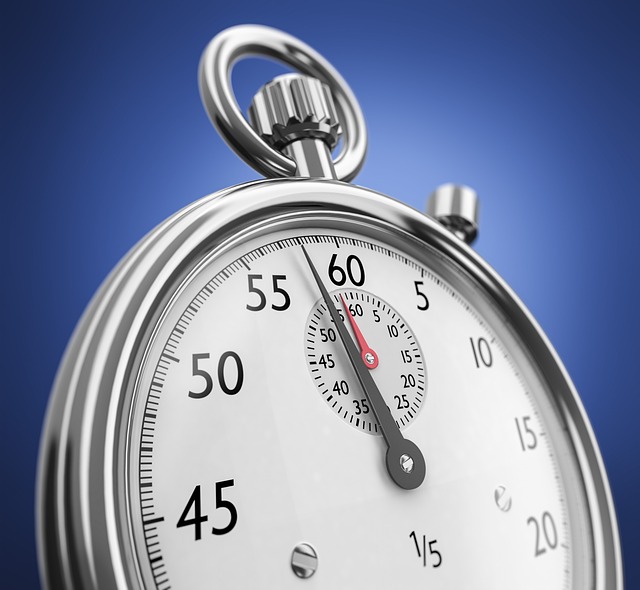Discover the secret behind soccer players’ stamina! How many miles can these athletes cover during intense practice sessions? Let’s find out.
Contents
- Introduction: Understanding the Importance of Mileage in Soccer Training
- Factors Influencing Mileage: Position, Fitness Level, and Game Strategy
- Factors Influencing Mileage:
- Exploring Different Training Approaches: High Mileage versus Quality Sessions
- The Benefits of Incorporating Endurance Runs into Soccer Practice
- Balancing Distance and Speed: Finding the Optimal Mileage for Each Player
- Track and Analyze: Utilizing Technology to Monitor Mileage and Performance
- Enhancing Performance through Interval Training: A Key Component of Soccer Practice
- Injury Prevention: Managing Mileage to Reduce the Risk of Overuse Injuries
- Tailoring Mileage to Individual Players: Recognizing the Importance of Personalization
- Conclusion: Striking the Right Balance for Mileage in Soccer Training
Introduction: Understanding the Importance of Mileage in Soccer Training

Soccer is a game that demands a high level of physical fitness and endurance from its players. One crucial aspect of training that plays a significant role in improving a player’s overall performance is mileage. Understanding the importance of mileage in soccer training is essential as it directly correlates with the distances covered during practice sessions and matches. By incorporating varying distances and intensities in their training regimen, players can maximize their endurance and enhance their performance on the field.
In a typical soccer training session, players can expect to cover several miles. The distance covered can vary depending on several factors, including the level of play, individual training goals, and the specific drills being undertaken. However, it is not just the mileage itself that is important, but also the quality of the runs. Soccer players engage in various types of runs, including sprints, jogs, and longer endurance runs. These different types of runs serve different purposes, such as improving speed, agility, and overall cardiovascular endurance. By incorporating a mix of these runs into their training sessions, players can enhance their overall fitness levels, enabling them to perform at their best during matches.
To summarize, the mileage covered during soccer training is of utmost importance for players seeking to excel in the sport. By incorporating a variety of runs into their training regimen, players can improve their endurance, speed, and overall performance on the field. So, whether it’s sprinting, jogging, or endurance runs, the mileage covered during practice is a crucial component of a soccer player’s training regimen.
Factors Influencing Mileage: Position, Fitness Level, and Game Strategy

Factors Influencing Mileage:
When it comes to a soccer player’s training regimen, there are several factors that influence the number of miles they run during practice sessions. These factors include the player’s position on the field, their fitness level, and the game strategy employed by their team.
- Position: Different positions require different levels of physical demand. For example, midfielders are often known to cover more ground compared to goalkeepers or central defenders. This means that midfielders may have to run more miles during practice sessions to improve their endurance and performance during a game.
- Fitness Level: A player’s fitness level plays a crucial role in determining the number of miles they can run in practice. Players with higher fitness levels are able to cover more ground and sustain their performance for longer periods. Regular conditioning exercises, such as interval training and aerobic workouts, can significantly improve a player’s fitness level and their ability to run more miles.
A player’s fitness level and position are not the only factors influencing the mileage covered in practice. The game strategy employed by the team also plays a significant role. Some teams may focus on possession-based play, requiring players to make shorter sprints and cover less distance. On the other hand, teams that employ a high-pressure system may require players to constantly press the opponents, leading to a higher mileage during practice sessions.
- Game Strategy: The game strategy not only dictates the player’s movement on the field but also influences their training regimen. Coaches may incorporate drills and exercises that mimic the specific movements and intensity required in a particular game strategy. This ensures that players are well-prepared and accustomed to the physical demands of their team’s chosen approach.
Overall, the number of miles soccer players run during practice sessions can vary greatly based on their position, fitness level, and game strategy. It is important for players to focus on improving their endurance, stamina, and overall fitness to meet the demands of their position and team. By understanding and addressing these factors, players can optimize their training regimen and ultimately enhance their performance on the field.
Exploring Different Training Approaches: High Mileage versus Quality Sessions
When it comes to designing an effective training regimen for soccer players, one of the key considerations is the balance between high mileage and quality sessions. Some coaches believe that having their players cover a significant amount of distance during practice is essential for building endurance and improving overall fitness. These high mileage training approaches often involve incorporating long runs, extensive laps, and extended time spent on the field.
On the other hand, there is a growing school of thought that argues quality sessions are more beneficial for enhancing performance on the soccer field. This approach emphasizes shorter, focused training sessions that prioritize intensity, specific skill development, and tactical understanding. Rather than simply clocking miles, these workouts concentrate on improving speed, agility, decision-making, and teamwork through drills, structured games, and simulated match scenarios.
So, which approach should coaches adopt? The answer lies in finding the right balance that suits the needs and goals of the team. While high mileage sessions build endurance and can be useful for players preparing for long tournaments or seasons, quality sessions contribute to the development of game-specific skills and promote better decision-making under pressure. For soccer players, it is crucial to maintain a balance between mileage and quality sessions to optimize overall performance on the pitch.
Benefits of High Mileage Training:
- Enhanced cardiovascular endurance.
- Improved overall fitness levels.
- Increased capacity for longer, sustained efforts.
Benefits of Quality Sessions:
- Enhanced speed and agility.
- Better decision-making and tactical understanding.
- Improved specific skills relevant to the game.
The Benefits of Incorporating Endurance Runs into Soccer Practice

Soccer players, known for their rapid movements and endurance, require a well-rounded training regimen to excel on the field. Incorporating endurance runs into soccer practice can provide a range of benefits for players at all levels. Whether you are a beginner or a professional, improving your endurance can elevate your game and give you a competitive edge.
Enhanced cardiovascular fitness: Endurance runs increase your cardiovascular endurance, allowing your heart and lungs to work more efficiently. This leads to improved oxygen delivery to your muscles, helping you sustain intense activity for longer periods during a match. By regularly engaging in endurance runs, soccer players can boost their aerobic capacity, which is vital for endurance-based sports like soccer.
Increased stamina and reduced fatigue: Soccer matches often involve continuous running and constant movement. Endurance runs help players build stamina, enabling them to perform at their best throughout the game. Regular training sessions focusing on endurance can enhance a player’s ability to recover quickly, reducing the risk of fatigue and improving overall performance on the field.
Improved mental toughness: Running long distances requires mental resilience and determination. Incorporating endurance runs into soccer practice helps players push past their limits, building mental toughness that can be highly beneficial during tough matches or high-pressure situations. The ability to maintain composure and stay focused throughout a game is crucial for success in soccer.
Reduced risk of injury: Endurance training strengthens muscles, tendons, and ligaments, making players less prone to injuries. As fatigue sets in, players often experience decreased coordination and stability, leading to accidents on the field. By incorporating endurance runs into practice, soccer players can increase their overall body strength and develop better proprioception, reducing the risk of injury.
Balancing Distance and Speed: Finding the Optimal Mileage for Each Player

When it comes to training for soccer, finding the perfect balance between distance and speed is crucial. Determining the optimal mileage for each player requires careful consideration of their individual needs and goals. Some players may benefit from longer distance runs to improve endurance, while others may benefit more from shorter, high-intensity sprints to enhance their speed and agility.
It is important to note that there is no one-size-fits-all solution when it comes to mileage in soccer practice. Coaches and trainers must assess the specific requirements of each player and tailor their training regimen accordingly. By incorporating a combination of long-distance runs, sprint intervals, and recovery periods, players can improve their overall fitness level and performance on the field. Additionally, incorporating drills and exercises that simulate game situations can further enhance a player’s ability to maintain optimal speed and endurance throughout a match.
Track and Analyze: Utilizing Technology to Monitor Mileage and Performance
When it comes to training and optimizing performance, technology has become an invaluable tool for soccer players and coaches alike. With the ability to track and analyze data, players can now monitor their mileage and performance with precision, providing valuable insights into their training regimen. By utilizing innovative technologies, teams can gain a deeper understanding of the physical demands placed on their players during practice sessions and tailor their training programs accordingly.
One of the key aspects that technology allows teams to analyze is the number of miles soccer players run during practice. This information is crucial for coaches to gauge the intensity and workload of their training sessions. By tracking mileage, coaches can ensure that their players are performing at optimal levels and avoid overexertion or undertraining. Additionally, monitoring mileage can help identify any discrepancies in the players’ workload, allowing for adjustments to be made to minimize the risk of injury and promote better performance.
Enhancing Performance through Interval Training: A Key Component of Soccer Practice

Interval training is a crucial aspect of soccer practice that helps enhance players’ performance on the field. Instead of focusing solely on endurance or speed, interval training combines the two to improve both aerobic and anaerobic capacities. Through its high-intensity nature, this training method mimics the dynamic nature of a soccer match, which involves quick bursts of energy followed by recovery periods. By incorporating interval training into their practice routine, soccer players can develop their overall fitness levels, endurance, and speed, ultimately improving their on-field performance.
During interval training sessions, soccer players cover a significant mileage, which varies based on factors such as fitness levels, position, and the coach’s training plan. On average, it is estimated that professional soccer players cover around 7-10 miles during a 90-minute match. However, in practice sessions, the distance covered may be less due to the focus on specific skills, tactics, and drills. Typically, players can expect to cover anywhere between 2-5 miles in a single practice session. The distance covered during practice helps players maintain their fitness levels, improve endurance, and build the stamina necessary to perform at their best during matches.
When engaging in interval training, it is crucial for soccer players to maintain a balance between high-intensity sprints and recovery periods. This can be achieved by structuring the training session using periods of work, followed by periods of rest. For example:
- 1. Sprint for 30 seconds
- 2. Jog slowly for 60 seconds
- 3. Repeat the cycle for 10-15 minutes
By incorporating interval training into their practice regimen, soccer players can push their limits, increase their overall fitness, and enhance their performance on the field.
Injury Prevention: Managing Mileage to Reduce the Risk of Overuse Injuries

When it comes to injury prevention in soccer, managing mileage during practice is a crucial aspect that should not be overlooked. Overuse injuries, such as tendonitis, stress fractures, and muscle strains, can occur when players consistently push their bodies beyond their limits. By understanding the optimal balance of mileage, coaches and athletes can reduce the risk of these injuries and enhance their overall performance on the field.
So, how many miles do soccer players typically run in practice? The answer varies depending on several factors, including the age group, skill level, and training goals of the team. However, it is important to note that quality over quantity is paramount in training regimens. Soccer practices often involve a combination of endurance runs, sprint intervals, agility drills, and tactical exercises. Instead of solely focusing on the number of miles covered, coaches should prioritize the intensity and specificity of each training session to ensure players are adequately challenged.
- Listen to your body: Players should pay close attention to any signs of fatigue, pain, or discomfort during practice. It is crucial to communicate these sensations to the coaching staff and take appropriate rest or modification measures when necessary.
- Gradual mileage progression: It is advised to gradually increase the mileage over time to allow the body to adapt and minimize the risk of overuse injuries. Sudden spikes in distance or intensity can overwhelm the musculoskeletal system and lead to unwanted setbacks.
- Cross-training: Incorporating other forms of exercise, such as cycling or swimming, can provide a valuable break from repetitive stress on the body while maintaining cardiovascular fitness. Cross-training activities also help to strengthen different muscle groups, providing a more well-rounded conditioning.
Tailoring Mileage to Individual Players: Recognizing the Importance of Personalization
When it comes to soccer training, tailoring mileage to individual players is an essential aspect that cannot be overlooked. Recognizing the importance of personalization allows coaches to optimize the performance and development of each player on the team. While there is no one-size-fits-all approach, understanding the factors that influence mileage can help create an effective training regimen.
One key factor to consider is the position played by the individual player. Forwards and midfielders typically cover more ground during a game compared to defenders and goalkeepers. As a result, their training mileage needs to be adjusted accordingly. Additionally, the player’s age, fitness level, and injury history should be taken into account. Younger players may require a different training approach compared to more experienced ones, while players with a history of injuries may need a more gradual increase in mileage to prevent further issues.
- Variety: Incorporating a variety of training exercises and drills is crucial for keeping players engaged and motivated. This can include interval training, sprint work, long-distance running, and agility exercises. By mixing up the type of exercises, players are not only developing their endurance, but also improving their overall fitness and skill set.
- Tracking: Utilizing technology such as GPS tracking devices or fitness apps can provide valuable data on the distance covered by each player during practice sessions. This information can help coaches monitor progress, identify any potential imbalances or areas for improvement, and make informed decisions when adjusting individual training plans.
- Rest and recovery: Balancing training mileage with adequate rest and recovery is essential to prevent overtraining and reduce the risk of injuries. Allowing players time to rest and recover improves their overall performance and reduces the likelihood of burnout. Coaches should encourage players to prioritize sleep, incorporate rest days into the training schedule, and provide guidance on proper nutrition and hydration.
Conclusion: Striking the Right Balance for Mileage in Soccer Training

In conclusion, finding the optimal balance for mileage in soccer training is essential for players to perform at their best. While running plays a crucial role in building endurance and stamina, it is important not to solely focus on the number of miles covered. Quality training sessions that integrate a variety of exercises and drills can be just as beneficial, if not more so, in improving performance and preventing injuries.
To strike the right balance, coaches and trainers should consider the following factors:
- Intensity: It is crucial to vary the intensity of running sessions, including incorporating high-intensity interval training (HIIT) and speed work. This helps players develop the explosive power and quick bursts of speed needed during matches.
- Technique: Instead of solely focusing on distance, training should also prioritize proper running technique. Emphasizing good form and mechanics not only reduces the risk of injuries but also improves efficiency and performance.
- Recovery: Adequate rest and recovery are equally important in a training regimen. Overtraining can lead to exhaustion, increased risk of injuries, and decreased performance. It is crucial to schedule rest days and include active recovery methods, such as stretching and low-intensity exercises, in between intense training sessions.
By striking the right balance between mileage, intensity, technique, and recovery, soccer players can optimize their training regimen and ultimately enhance their performance on the field. Remember, it’s not just about running miles, but about running with purpose and incorporating a well-rounded approach to training. In conclusion, a soccer player’s training regimen involves running an average of 5-7 miles in practice. It helps improve endurance, speed, and overall performance on the field. Stay committed to your training and reach new heights in the game! #soccertraining #endurance #performance


![How Long is a Soccer Game? [Pro/College/HighSchool/Youth] 11 how long is a soccer game?](https://stmichaelssoccer.com/wp-content/uploads/2022/10/how-long-is-a-soccer-game-150x150.jpg)
